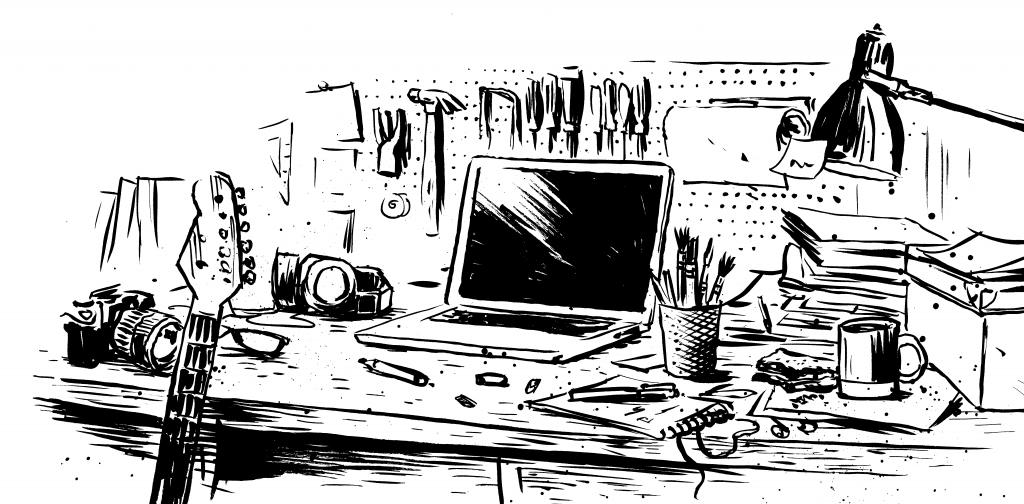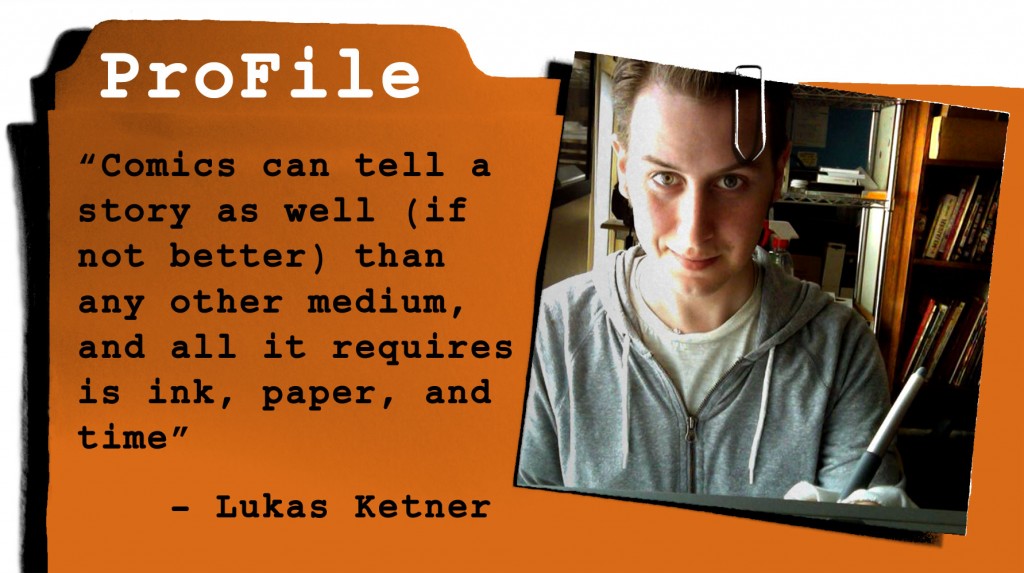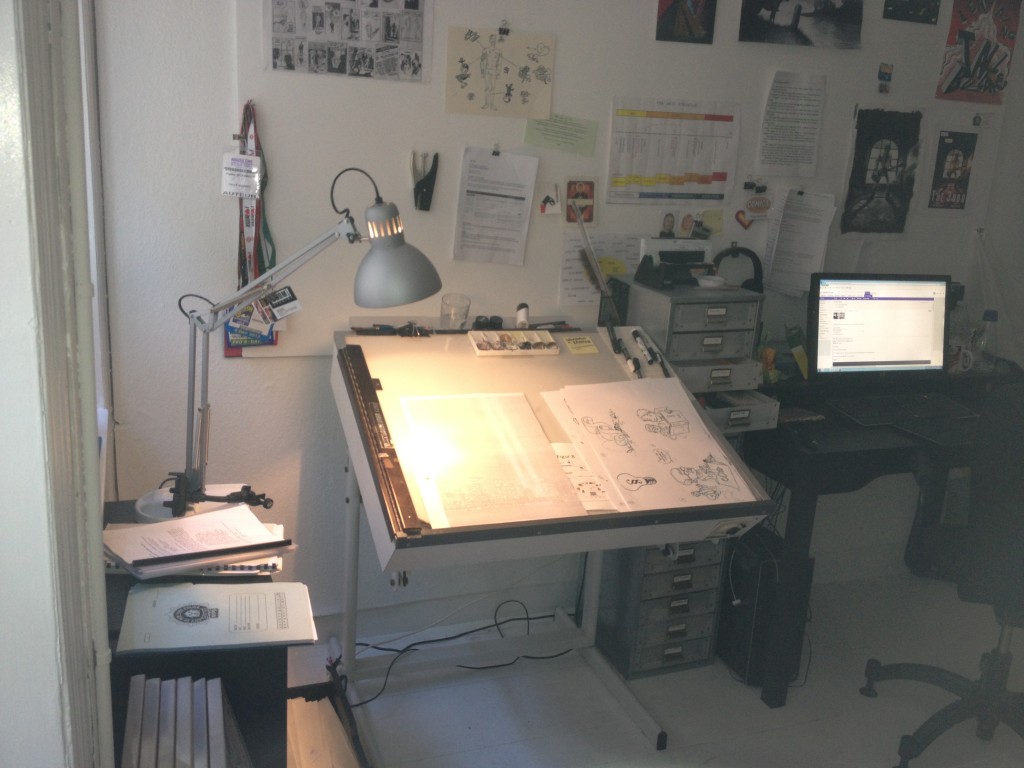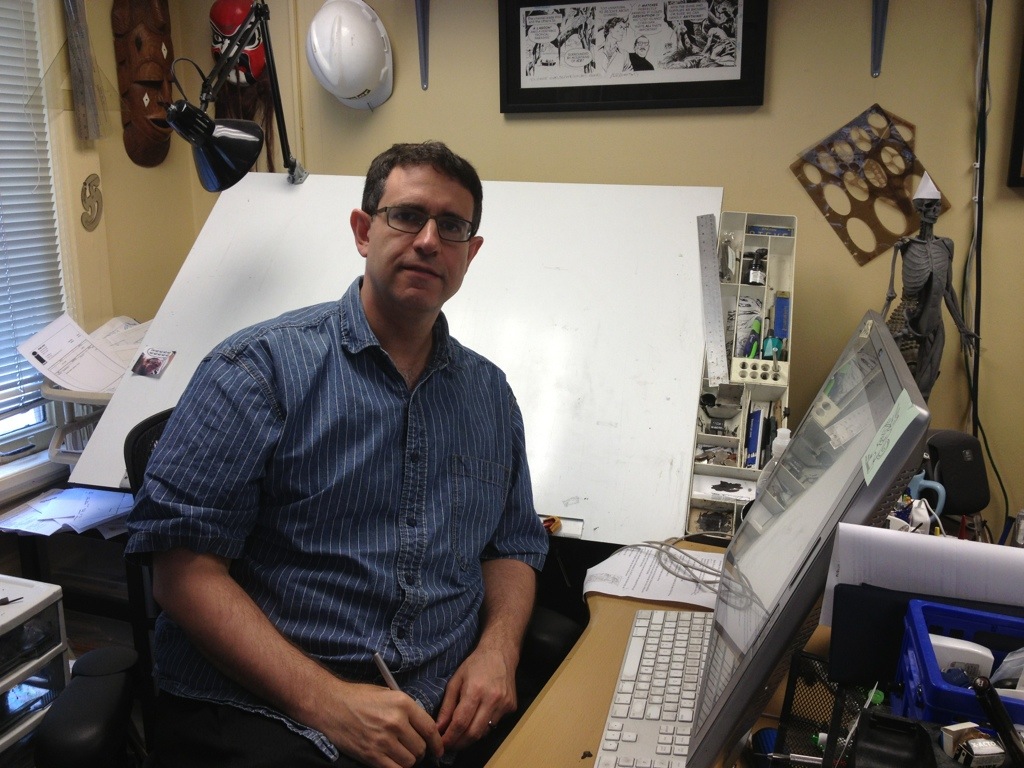
As I’ve mentioned before, I wouldn’t have had the career I have today, if it wasn’t for my time at Gimle Studios. This is where I learned from the best, grew my network and got the jobs that laid the foundation for my business. Most importantly, being surrounded by other hard working professionals was how I built my work ethic and self-confidence as an artist.
Later on I got a spot at the larger co-op Republikken, which was as far from what Gimle was as I could get. I needed to shake things up a bit and sitting with designers, photographers and other types of creatives as well as entrepreneurs certainly helped me get a new perspective. This is where I came up with ComicsForBeginners.com and where I started to really focus on my own projects.
After working out of my house for a year while I studied at Film School (yet another way I started to think outside the box) I’m not back at a studio space. I have my own room which is perfect for when I’m writing and need to concentrate, when I have people over for podcast interviews or I’m doing videos. In hindsight, I would probably have benefitted from isolating like this sooner, as I tend to get involved in conversations if I’m in an open office environment. I love having an office in town as it helps my focus to have a dedicated workspace and just a good reason to get out of the house every morning.
If you want to work from your house, an office space or the local coffee shop is up to you. Of course it depends on what you do, what area you live in and what your economic options are – and what kind of set-up your work requires. I’m sure an opera singer will have a harder time working from a café than a blogger.
Pros and cons
To help you decide where to work from, here’s a list of some of the advantages and disadvantages.
Home office pros:
- A pretty quiet work environment, no office chatter or ringing phones besides your own
- No extra rent (and maybe even a tax deduction – check with your relevant authorities)
- You always have all your tools and files at hand and can work anytime – even after the kids are put to bed
- Speaking of kids, you may find it convenient to be able to take care of your young ones at home, while you’re running your business
- Speaking of kids, you may find it convenient to be able to take care of your young ones at home, while you’re running your business
Home office cons:
- Lonely lunch hours and probably nothing interesting in the fridge
- Work habits can be hard to maintain and things can start to slide
- Working alone no one will notice your procrastination
Office space pros:
- Getting away from your house chores can do wonders for your productivity
- You can take longer days and not be interrupted when the kids come home
- Your friends tend to leave you alone and not lure you out for drinks if you’re in an office
- No obligation to do dishes or laundry, you can focus on the work
- Procrastination is harder to fall into when everyone around you is working
- You have a support group of peers handy if you get stuck creatively or run out of work
Office space cons:
- Commute
- Rent
- Other freelancers can be noisy and/or lazy too
- Water cooler chatter can eat up your days
Alternative working spaces
More and more business hotels and co-ops are popping up, where you don’t have to have a desk but rather just plop down where ever is available. A lot of freelancers take their laptops to the local library or set up office at the Starbucks. Some people find it hard to work with a noisy espresso machine going on in the background, others find the buzz of people inspiring and appreciate the constant supply of coffee availabe. The coffee isn’t free though. You could end up spending more money on lattes than you would on an office space – and gain twenty pounds!
If getting a spot at a studio or a co-op is out of reach, try finding a peer group online that you can check in with on a regular basis. Committing to a weekly hangout or uploading new art every Wednesday can help you stay on track and keep you motivated. Accountability and moral support is solid gold for a struggling, self-doubting creative.
This post is an excerpt from my book SOLO – Survival Guide for Creative Freelancers – Pre-order now on Amazon.



